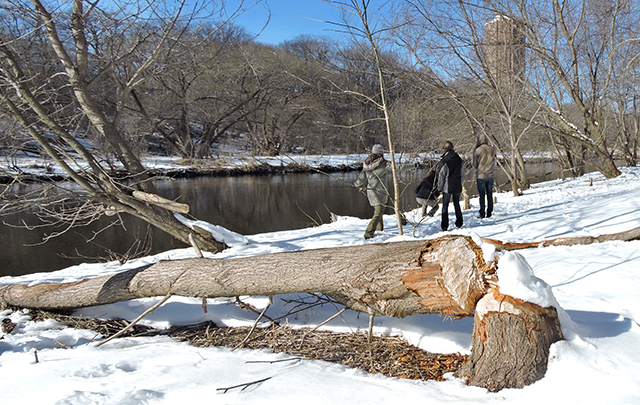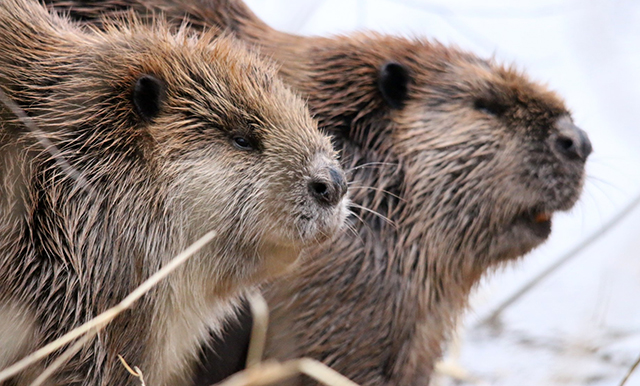The Center’s mammal monitoring program was piloted in 2005 and uses visual surveys, live trapping and camera surveillance to monitor presence/absence and population trends. Large diurnal mammals are identified through visual surveys, while field cameras are employed to document similar-sized nocturnal mammals. Sherman folding traps and pitfall traps are used to identify small nocturnal mammals.
We study the population trends and presence of small mammal species in our parks using live trapping and mark-recapture methods over the course of two or three consecutive mornings, multiple times throughout the summer field season. Filmed here is our Menomonee Valley branch in 2019.
Show you value mammals in our urban ecosystem with a gift!
Current and past research studies borne from this project include a nest box study, a scent comparison study and a predatory exclosure study. Mammal monitoring runs from June – August and welcomes curious community members to the project.

Walk through Riverside Park with Wisconsin DNR biologist Dianne Robinson to assess beaver activity. Photo: Jessica Orlando

The beaver (Castor canadensisis) has made a return to Riverside Park in the last few years. Photo: Bruce Halmo
Besides beavers, there have been river otter sightings downtown along the Milwaukee River, beginning winter 2019. We also had a sighting on the west bank of the river right across from the UEC. It will be interesting to see if otter sightings become more frequent as water quality and quality of habitat improves along the Milwaukee River.
The Urban Ecology Center’s mammal research has received valuable funding from:
- The Citizen-based Monitoring Network of Wisconsin’s Partnership Program
- The Environmental Protection Agency’s Great Lake’s Restoration Initiative



